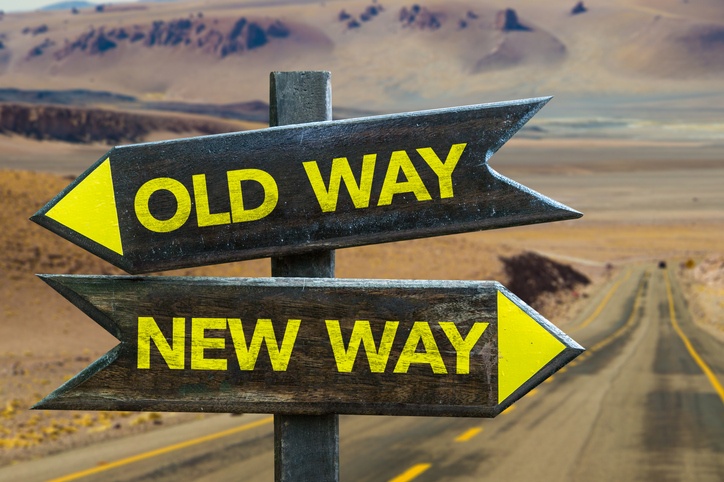“Continuing to do what’s working is easy. What’s harder is to stop doing the things that aren’t working.”
My thoughts exactly. In fact, in a recent Forbes article about how first-time CMOs need to focus on what to keep doing, start doing and sometimes more importantly, stop doing, I’m referenced as saying that just like individuals, fear, habit and hope can keep companies (even the most successful ones) from evolving.
The article then mentions a previous Forbes blog of mine, “Why We’re So Afraid of Change — And Why That Holds Businesses Back,” in which I discuss how so many businesses we work with at SAMC find themselves stuck, experiencing zero growth. The reason? (It’s obvious to us but they can’t see it.) In the midst of massive change all around them, they insist on using the same outmoded tactics to run their companies while wishing for the old world order to return. Good luck with that.
Beyond fearing change itself, many companies fail to see how the business environment itself is shifting.
Old distribution channels are shrinking. Contractors are cutting distributors out of the supply chain. Consumers are finding better prices on the internet. With product life cycles continually shortening, competitors are upstaging each other’s products in no time. Now more than ever, if you can’t change, you risk becoming antiquated.
As a corporate anthropologist and certified Blue Ocean Strategy® practitioner, I see these struggles all the time with many of our clients. For otherwise successful business leaders, change is literally pain. CEOs know they have to change but are typically:
- Afraid of the unknown
- Driven by well-honed habits
- Convinced the past will reappear and save them
Fortunately, there are ways to help initiate meaningful change:
- Get out of the office. Venture out into the world. Rather than focusing on current market segments, look at new ones.
- Go exploring. I take my clients into the marketplace to uncover unmet consumer needs. Transformed into amateur anthropologists, they spend a day in the life of their customer, or noncustomer, and watch how they do their jobs, listen to their pain points, and come up with new ways to solve their problems.
- Build an innovative culture. It’s a big leap from thinking you’re innovative to being innovative. Building a culture of innovation means creating a methodology for encouraging the free exchange of ideas, which ultimately turns good thoughts into actions and measurable results.
If you truly want to see, feel and think in new ways, you have to fight your brain’s desire to stay put.
Embracing change requires you yourself to experience the changes you’re asking your organization to undergo. To ignite change, you need to do it yourself first. This means changing your brain’s focus, then communicating the new direction to the rest of your team so that the desired change can truly take hold.
Want to learn more about how to boldly embrace change? Let’s talk!
At Simon Associates Management Consultants (SAMC), we specialize in helping companies and the people who work for them realize that yes, “change is pain,” but they can change and actually do it well. Here are some of our most popular blogs and podcasts that elaborate on that idea. Please contact us to let us know if they inspire you to change!
- Managing Change in Fast-Changing Times
- 5 Ways to Help Your Business Adapt to Changing Times
- Why Change Is So Scary—And Why That Dooms Businesses To Fail
- Change Management Step 1
- Change Management Step 2
- Change Management Step 3
From Observation to Innovation,

Andi Simon, Ph.D.
Corporate Anthropologist | President
Simon Associates Management Consultants
Info@simonassociates.net
@simonandi
Don’t miss an episode of our On The Brink podcast!
Subscribe now



